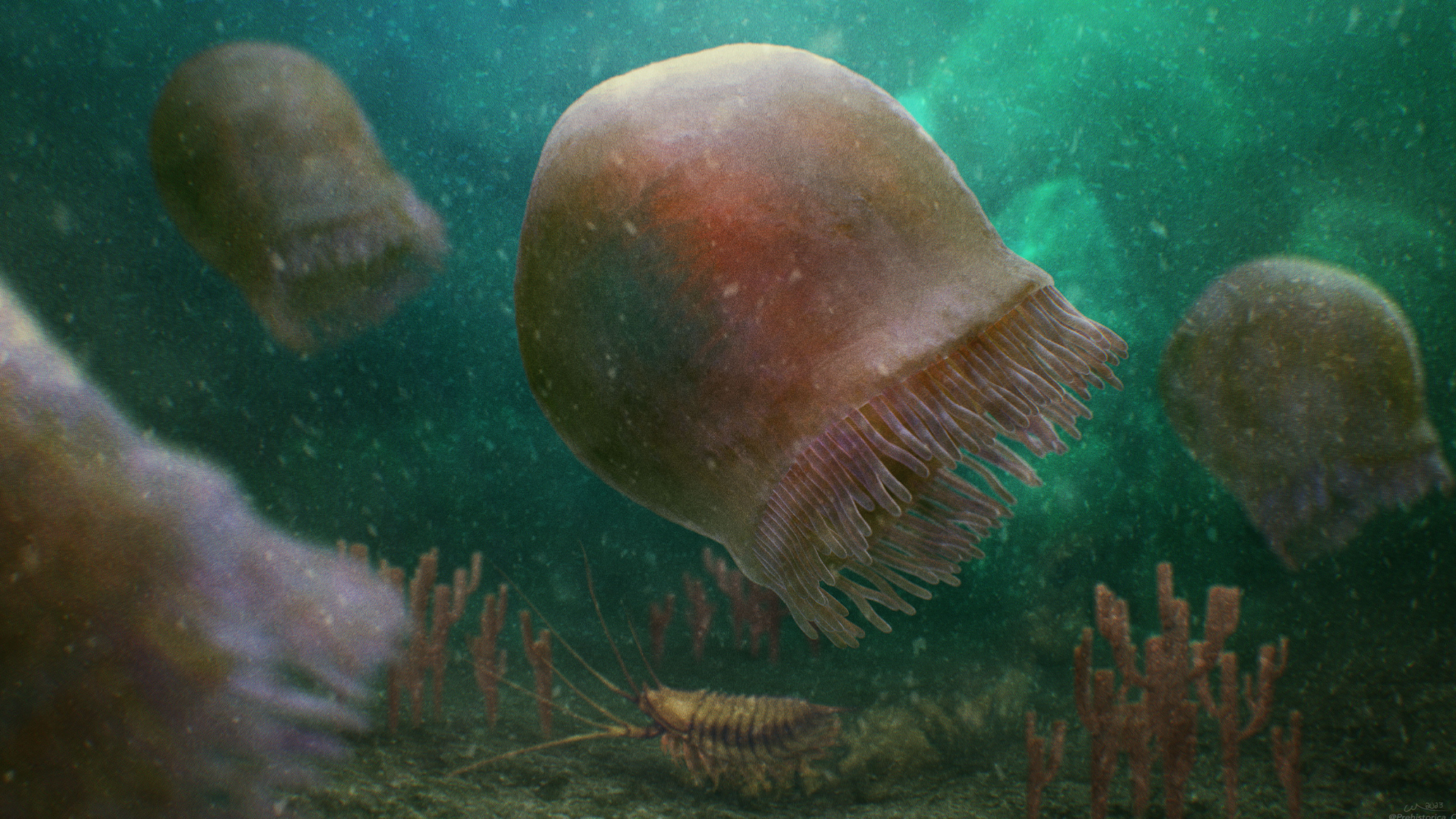

Despite lacking blood, a heart, or a brain, slimy jellyfish are one of Earth’s most ubiquitous sea creatures and various species live in all of the planet’s oceans. They are some of the Earth’s oldest animals, having been around for roughly more than 500 million years (that’s 250 million years older than the earliest dinosaurs). Now, scientists with Toronto’s Royal Ontario Museum have found the oldest swimming jellyfish in the fossil record. The discovery of the newly named Burgessomedusa phasmiformis is described in a study published August 1 in the journal Proceedings of the Royal Society B.
[Related: These jellyfish seem to cheat death. What’s their secret?]
Jellyfish belong to a clade of animals called medusozoans, which includes the box jellies, hydroids, stalked jellyfish, and true jellyfish that swim in the oceans today. Medusozoans are part of the group Cnidaria, which also includes sea anemones and corals. The discovery of Burgessomedusa shows that large, swimming jellyfish that are bell or saucer-shaped had already evolved over 500 million years ago.
Jellyfish are made of roughly 95 percent water, making them tricky to capture in the fossil record. However, the Burgessomedusa fossils are exceptionally well preserved in the Burgess Shale in the Canadian Rockies. The Royal Ontario Museum now holds close to 200 specimens that were used to learn more about the internal anatomy and tentacles of ancient jellyfish, with some specimens measuring more than seven inches long. Like some modern jellyfish, Burgessomedusa would also have been capable of free-swimming. Their tentacles would have helped it catch pretty big prey.

“Although jellyfish and their relatives are thought to be one of the earliest animal groups to have evolved, they have been remarkably hard to pin down in the Cambrian fossil record. This discovery leaves no doubt they were swimming about at that time,” study co-author and University of Toronto PhD candidate Joe Moysiuk said in a statement.
This study uses fossil specimens that were discovered at the Burgess Shale during the late 1980s and 1990s. The fossils demonstrate that the Cambrian food chain was much more complex than paleontologists previously believed, and the large swimming arthropods of the time like Anomalocaris were not the only predators.
[Related: Italian chefs are cooking up a solution to booming jellyfish populations.]
One of the more gnarly parts of the complex life cycle of Cnidarians is that they can have more than one body form. A vase-shaped and non-free swimming body is called a polyp, while medusozoans have a bell or saucer-shaped body–called a medusa or jellyfish–that can be free-swimming or not. Fossilized polyps have been found in about 560-million-year old rocks, but the origin of the more free-swimming medusa or jellyfish is not well understood. Their evolutionary history is primarily based on microscopic fossilized larval stages and molecular studies performed on living species.
“Finding such incredibly delicate animals preserved in rock layers on top of these mountains is such a wondrous discovery. Burgessomedusa adds to the complexity of Cambrian foodwebs, and like Anomalocaris which lived in the same environment, these jellyfish were efficient swimming predators,” study co-author and Royal Ontario Museum’s invertebrate paleontology curator Jean-Bernard Caron said in a statement. “This adds yet another remarkable lineage of animals that the Burgess Shale has preserved chronicling the evolution of life on Earth.”
